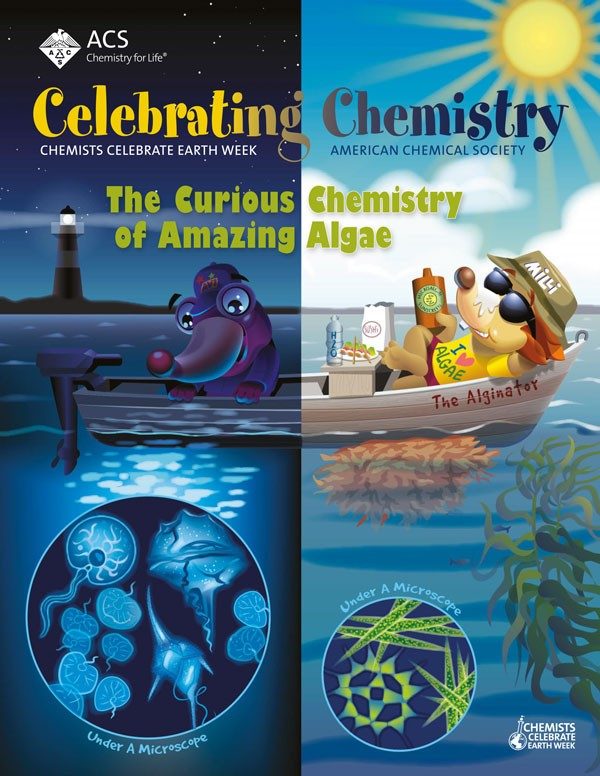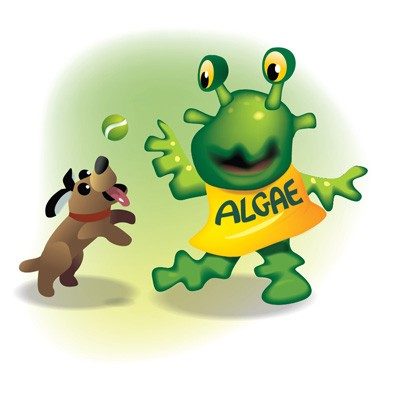By Sara Delgado-Rivera
Have you ever seen brown or green goo floating on a river or in the ocean? Or have you noticed how the walls of a fish tank sometimes turn green and slimy? These are all examples of algae—but there is a lot more to the algae story!
The word “algae” refers to various organisms that usually live in water. Fun fact: Algae is actually the plural form of the word alga, which means a single plant-like organism. They are a little like plants—but they are also different. For instance, they make their own food through photosynthesis, like plants do, using a chemical called chlorophyll. Also like plants, they naturally help in producing oxygen, which we humans need to live. (Read more in this article.) But unlike plants, algae have no roots, leaves, or flowers.

About our cover
Our cover illustrates some of the incredible stories of algae.
The left side of the cover shows one of the most amazing things about certain algae: they glow in the dark. The phenomenon is called bioluminescence, and the blue glow Avi is watching is caused by the behavior of huge groups of dinoflagellates, the microscopic algae shown enlarged in the circle. (Read more in this article)
On the right side of the cover, it is daytime—and we can see two kinds of algae in the water around the boat. One type is microalgae, which can only be seen with a microscope. Macroalgae, on the other hand, is big enough to see with your eyes, and examples include the brown seaweeds called sargassum and kelp. Sargassum floats near the water’s surface, while kelp is anchored to rocks on the ocean floor. Both of these types of algae feed and give shelter to other marine life, including fish, turtles, crustaceans, otters, and even sharks.
The cover also shows some of the many uses scientists have found for algae, such as:
- The food tray includes some nori, an edible red seaweed used to make sushi. (Read more in this article and in this activity.)
- Milli’s water bottle is a bioplastic, made with microalgae! It can help reduce pollution caused by single-use plastics. There are some bioplastic bottles you can eat after you drink the water!
- Milli’s sunscreen, made with microalgae, blocks UV light … but unlike regular sunscreen, when it washes off into the ocean, it will not harm coral reefs.
- Milli’s clothes are made from algae and do not include toxic dyes that can pollute water.
- Avi and Milli’s boat, The Alginator, runs on biofuels, made from living organisms instead of gasoline. Biofuels do not pollute the environment and can be made quickly and easily. (Read more in this article.)
Dive into algae!
We invite you to continue reading, learning, and having fun exploring the world of amazing, environmentally-friendly algae!
Sara Delgado-Rivera is Professor of Chemistry at University of Puerto Rico at Río Piedras and University of Sagrado Corazón.


